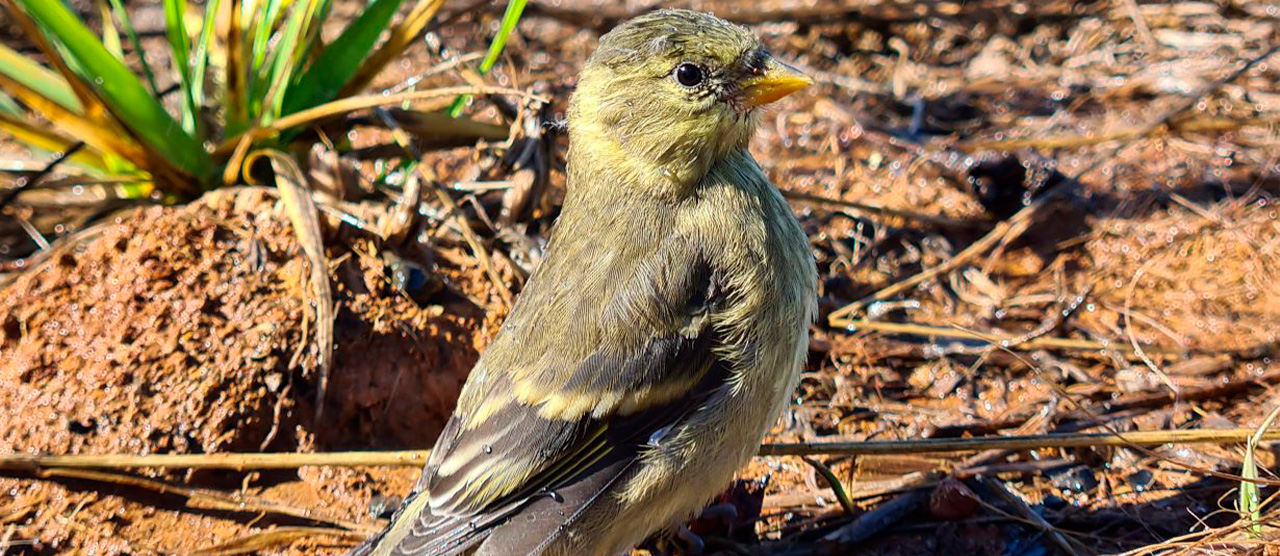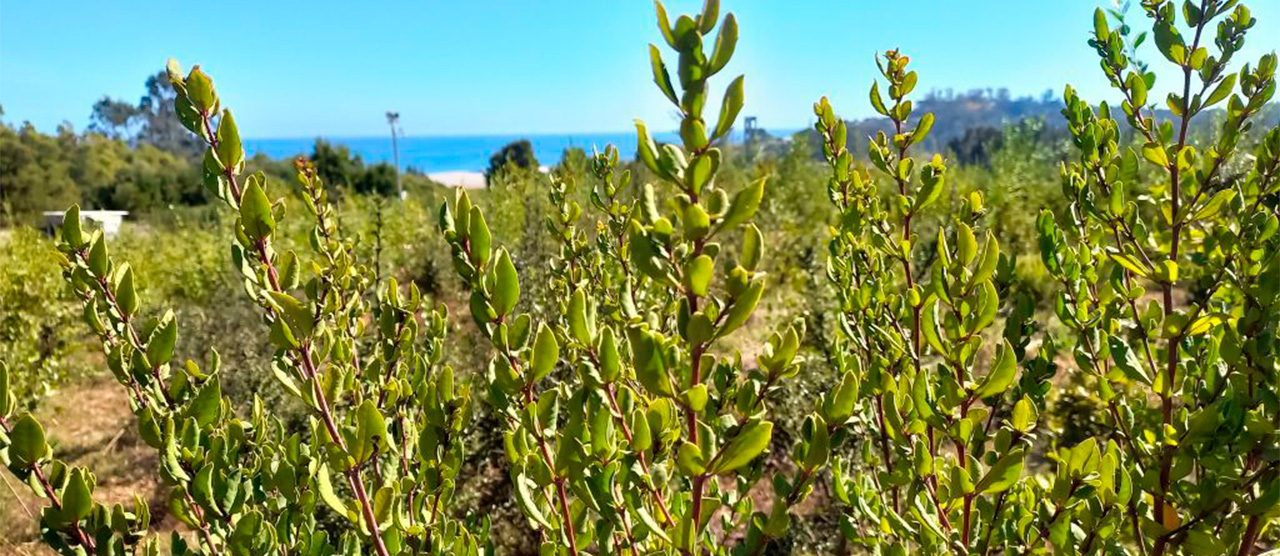
According to Farfan, the area was used primarily to dump coal combustion ashes from the Bocamina Plant, which were transported in trucks from silos located at the plant to the dump 500 meters away. The area was also used to deposit plaster generated in the desulfurization process (reduction of sulfur dioxide SO2 emissions). Close to 80% of the material was sent to cement companies. Therefore less than 20% remained at the dump.
The executive says, "one of the most important changes has been the substantial improvement in our impermeabilization type. Replacing the HDPE geomembrane with an LLDPE conductive membrane, where an electrical current can be applied to verify proper welding during installation, leaving no fissures or tears. Once the materials are placed on top, it detects if any damage is caused that needs repair.”
The Enel Head of Projects affirms that this is how they guarantee that whatever is placed on top will not come in contact with the ash, and any water that falls from rain or irrigation will not filter down.
In this sense, the project’s lead researcher explains that, to a certain degree, “these impermeable covers are a type of rock. The soil on top does all the work, as if there were an impermeable rock below, so water flows only through the soil and does not come into contact with the ash."
"The soil has been changing, with certain nutrient dynamics starting to appear that mirror what occurs in a natural system. For example, nitrogen and phosphorous are more available, thanks to the same biota working within the system.", Felipe Aburto, principal researcher.
Soil
The soil Aburto mentions is already forming and has been precisely one of the positive results of these initial years. "The soil has been changing, with certain nutrient dynamics starting to appear that mirror what occurs in a natural system. For example, there is more available nitrogen and phosphorous, thanks to the same biota working within the system," the Texas A&M professor reports enthusiastically.
These processes occur in the filled-in surface above the geomembranes. This layer is made using materials from a previous construction site nearby, where sediment was extracted from nearly two meters deep.
The thickness of this layer was another of the improvements implemented by Enel concerning the original RCA, explains the Head of Projects: "We increased the thickness of the land cover for reforestation. It was initially going to be half a meter for relatively small plants, but we ultimately increased that between one and two meters in some parts.”
As part of this process, they tested on a half-hectare pilot land within the same ash dump to evaluate different types of soil cover, like hydroseeding, geomat, direct seeding, and no cover.
They also measured the erosion because, as the specialist explains, the material used does not have the same properties as natural soil and no structure, meaning that it can erode easily despite the addition of compost. “We divided the pilot land into different plots and measured the types of cover, that is, how much material was perforated, how much water penetrated, how much was lost to erosion, etc.”
And this is where they saw another positive result of the project: "The system is stable in terms of erosion; in the systems already established with pastures and trees, we managed to control erosion," confirms the Ph.D. in Soil and Biogeochemistry.

Water
Along with recovering soil structure, the water cycle has also been restored, and the land is regaining its capacity to store water. All of this operates alongside the vegetation incorporated, which also influences the soil and water cycle changes.
As the Foresta Nativa researcher explains, in the pilot land and as the project progresses, one of the most critical measurements has been the attributes of the introduced species "concerning their resistance to water deficit and drought."
We have irrigated during the first phase, but since the plan is to restore the natural ecosystem, the goal is that irrigation will only be short-term. Because the soil cannot initially retain water, it was essential to supplement, but there are sectors where we have been able to reduce or stop irrigation gradually. “Now, during the dry summer season, the plants will be able to survive off of the water retained during the winter,” says Aburto.
In this regard, the Enel Head of Projects highlights that water use efficiency was one of the essential variables for the company when designing the area's reforestation, aiming for "the ecosystem to be autonomous, gradually reducing water use. In this sense, the technical advisory by UdeC has been fundamental.”
The measurements have shown another positive result: the increase in infiltration (and reduction in erosion), which allows "the rainwater to enter the system as if it were a natural forest, meaning that the plants use part of this water and the rest infiltrates without ever reaching the ash.”
They have reduced irrigation by 33%, "with a significant effect on the reduction of plant growth, but without increasing mortality rates (...) For five years, we should be able to stop irrigation completely," says the specialist.
"The objective of Ecological Restoration is that the system will be able to sustain itself; it will not require extra water or nutrients, but will be a natural ecosystem (...) The ash will continue below, but now we can use the land above. Nature can use it."
"(This project is inserted within the) company's commitment to improve environmental standards and go beyond the call of duty. A clear example since there will be a native forest in the middle of what was once a dump." Daniel Farfán, Enel Head of Projects.
Flora
All of the progress made in terms of soil and water are closely tied to the revegetation work done in the area, which, in turn, will help maintain the vegetation in the future.
Daniel Farfan, from Enel, notes that they were initially considering herbaceous and shrub-like vegetation. Still, within the framework of the decisions made and with the support of UdeC, they decided on “a reforestation plan that would imply a significant environmental improvement, that is, the ecological recovery of the sector with native shrubs and trees.”
Therefore, the design was based on the reference ecosystem of the Pedro del Río Zañartu Park, also considering the pilot evaluations that analyzed five species inhabiting the scrubland system of the coastal Mediterranean zone. The researcher notes that these species were selected because of their contrasting characteristics, such as nitrogen fixation, how they capture nutrients, fruit propagation (maqui and murtilla), regeneration potential, etc.
“If we look at the dump now,” explains Aburto, “you will see geometric figures, clusters based on the nuclei and structures you see in the forest (...) and which take into account two conditions. The first are the mounds, which correspond to the areas with two meters of land cover and where we could plant larger trees like the quillay, litre, boldo, and others. The second are the thinner soils, which we call transition ecosystems and where we have planted shrub species and some trees with limited growth.”
Conclusions on vegetation are optimistic: "The plants took root, and all of the species have a mortality rate of less than 25%, and there are even some with 0% mortality. We have a 100-75% survival rate, which is good."
One of the concerns regarding vegetation was root growth and ensuring that there was no contact with the ashes. For this reason, researchers have carefully monitored the plants using a root scanner to observe the different depths. This confirmed that “roots tend to be concentrated within the first 40 centimeters of soil. Some trees will go deeper, but they will not largely colonize.”
"Roots grow because they are searching for something, and further down, there is nothing of interest to them, so they have no reason to go there," the Texas A&M professor concludes.

Future
The researcher reports that he has been working with Enel recently to solidify the project's continuity while also including new measurements.
"We want to implement a new research plan, continuing to monitor everything we have been measuring. However, we must incorporate measurements like the effect of carbon sequestration on water dynamics in terms of the heat island effect - to what degree this green zone can lower the temperature concerning other parts of Coronel. We also want to evaluate what happens with the fauna. For example, quantifying the arrival of birds, reptiles, mammals, etc." They have observed birds coming to nest, native Chilean snakes, some rodents that have made their burrows, and woodlice, snails, slugs, etc.
In this new phase, the goal is to implement measurements in the Pedro del Río Zañartu Park to compare and determine "whether or not our ecosystem can mirror what occurs in our reference, in terms of nutrient and carbon cycles and other similar aspects.”
When asked about the possible uses for the forest, the Enel Head of Projects notes that they are still analyzing them. Still, they will likely continue to work in alliance with UdeC because "many elements of the project have a special value for academia in terms of research and community outreach."
Daniel Farfan highlights that this project is inserted within the "company's commitment to improve environmental standards and go beyond the call of duty.


